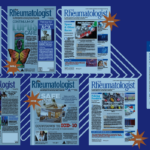Not surprisingly, California leads the country in healthcare construction, although one driving factor may be the California Seismic Safety Act mandating hospitals to meet structural guidelines to withstand a major earthquake by 2030. This has contributed to driving up the cost of hospital construction in the Golden State to $2M per bed compared with $1.7M in the rest of the country.11
Can the appearance of the building, the ward, the patient’s room, influence a patient’s outcome?
What do hospitals get for their pricey investment? First, patient safety has been enhanced by virtue of designing patient rooms that house a single patient, a far cry from the days when open wards were filled with scores of patients nursing open wounds. Shared bathrooms are no longer the norm, eliminating a portal for potent pathogens, such as C. difficile. Single-room design recognizes the needs of families by providing them with adequate space and reasonable sleep accommodations, a fact that was usually ignored in prior designs. And of course, rooms have views, linking patients with the vitality of nature and reminding them that they are still part of this great big world.
Many of these new buildings have other interesting attributes. Some have achieved the designation of being environmentally friendly and green. The days of being unable to shut down wasteful heating systems in June may finally be over. Some have recognized the importance of horticulture in the healing process and have installed small gardens within their facilities. And borrowing a page from the neighborhood café and the startup incubator, others have created open spaces in public areas where staff can sit and sip or mingle with fellow workers and share creative ideas.
A Rheum with a View
For decades, my colleagues and I toiled in a block of drab, windowless rooms whose only views were those of a long hallway that separated our practice from orthopedics and where clusters of their patients were constantly parked in stretchers or wheelchairs, patiently waiting to be called into their equally dismal offices. Then one day, we all moved to a gleaming, new spacious building, which—for lack of a deep-pocketed donor—is called the Building for Transformative Medicine.
What a transformation! Now, there is ample space for everyone. No one is left parked in a hallway. And to have a room with a view changes one’s mood and one’s attitude far more than one may ever wish to admit. Sunlight streaming through the window, raindrops tapping on the windowpane. Nature nurtures the patient and the doctor.


